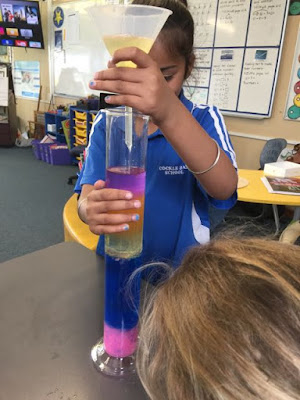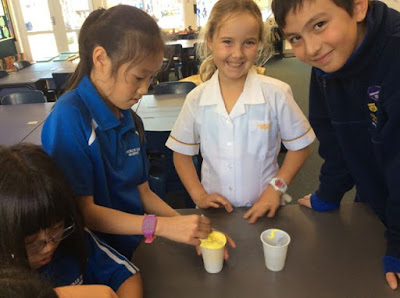The Senior Science Club took to the outdoors to set up a station for lizards. We set it up under trees in undergrowth behind Room 27 where it was overgrown and quiet. We will check it regularly and hopefully find slaters, skinks, lizards, spiders ..........
We are also on the look out for noxious weeds that are strangling native plants in some areas. We found three areas of ivy in Cockle Bay grounds.
Saturday, 24 June 2017
Junior Science Club investigates motion
The Junior Science Club used ramps and balls of different size, weight and density to investigate motion. We measured to see how far balls rolled down the ramp. It was quite interesting to see that different groups had different results, even though the incline of the ramp was the same for all groups.
Science Teaching Leadership Programme
Mrs Gillian Taylor has been participating in the Science Teaching Leadership Programme for terms 1 and 2. During this time, she has been seconded to the scientific company, Wildlands, which among other services, survey and monitor biodiversity and threatened species in New Zealand. Mrs Taylor has been primarily involved in scientific work concerning skinks and geckos, but has also been on field trips to monitor our native bats and other creatures.
 |
| Mrs Taylor in the field |
Science Professional Development at the Royal Society
Cockle Bay was invited to attend a Science planning meeting at the Royal Society in Wellington as part of the Science Teaching Leadership Programme. Science will be given an even greater focus as phase two of the programme is implemented over the next 18 months.
Monday, 19 June 2017
Squidgy Circuits - Junior Science Club
Squidgy Circuits - Senior Science Club
Science Club Presents at School Assembly
Demonstrating Density
Foaming Monsters
Balloon Rockets Are Go!
Visiting Auckland Zoo
Sunday, 18 June 2017
Ocean in a Bottle
Making Crystals
Lava Lamps - Junior Science Club
Subscribe to:
Comments (Atom)




















































